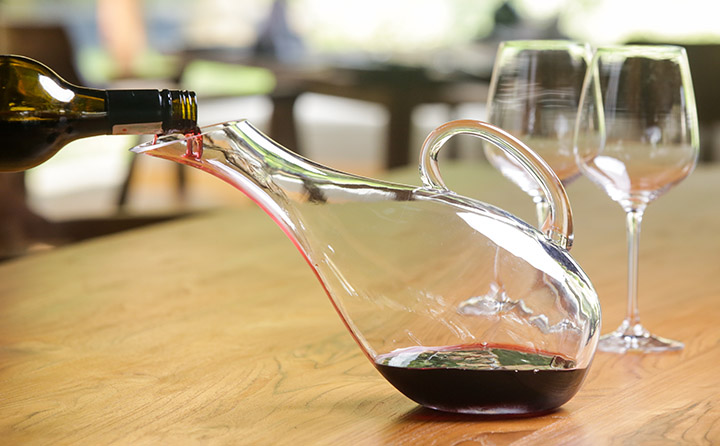That long decant time you’re noticing — needing about three hours to “open up” in the glass — is something many winemakers (myself included) have encountered with young red wines, especially those with structure and high tannin and color content.

Your question gets at the heart of something we often associate with service and sommeliers (the art of decanting) but it’s also deeply connected to winemaking choices you make long before the cork is pulled.
Decanting works by introducing oxygen into the wine after it’s been sealed up in the bottle, sometimes for years. That oxygen helps unlock aromatic compounds and smooth out textures that may feel tight, firm, or muted at first. But the more we understand what’s going on chemically, the more we can use that knowledge to craft wines that might need a little less air to show at its best.
Since you’re already noticing that your wine isn’t overly tannic or out of balance, there are a few winemaking steps you can consider to help soften it even further before it ever reaches the glass. First, take a look at your grape ripeness at harvest. Underripe fruit can have higher acidity and slightly greener phenolics, which can contribute to a wine that feels shy or closed in its early years. Letting fruit hang a bit longer (if conditions during harvest season in Wisconsin allow) can help phenolic ripeness catch up with sugar development, leading to rounder, more expressive wine earlier in its life.
Next, be careful not to overdo it during fermentation and maceration. Over-extracting tannins (especially from seeds or stems) can create a firmer structure that takes longer to resolve, even if it’s not overtly bitter. Keep an eye on your cap management: Gentle punchdowns and shorter maceration times (especially once you reach dryness) can help reduce the harsher, more rigid tannin profiles. Acid adjustment is another area to watch. Adding tartaric acid can be important for balance and microbial stability (spoilage bacteria love higher pH/lower acid environments), especially in warmer years, but too much, especially if it’s added later or right before bottling (which I don’t recommend) can tighten up the mouthfeel. Longtime readers have heard me say this in the past: If you can make the bigger adjustments up front and earlier on, the more integrated into the final wine that change will be — whether it’s a water addition, tannin addition, or acidity adjustment. Another tip: Try to “make your adjustments in the vineyard” by picking for best balance of flavor, sugar, tannin ripeness, and acid balance.
Finally, for wines that still feel a little firm or closed at bottling, you might consider fining with a gentle protein. Traditional egg white fining — or newer vegan options like potato protein — can selectively soften certain tannins without stripping fruit. It’s a classic Bordeaux technique for a reason. If done carefully, fining might reduce the need for such a long decant. Instead of three hours to open up, you might find it drinks beautifully in one or two.
Of course, a lot depends on your fruit, your cellar conditions, and your personal style. And sometimes, a long decant just becomes part of a wine’s ritual — that little window of anticipation that makes the final sip even better.




